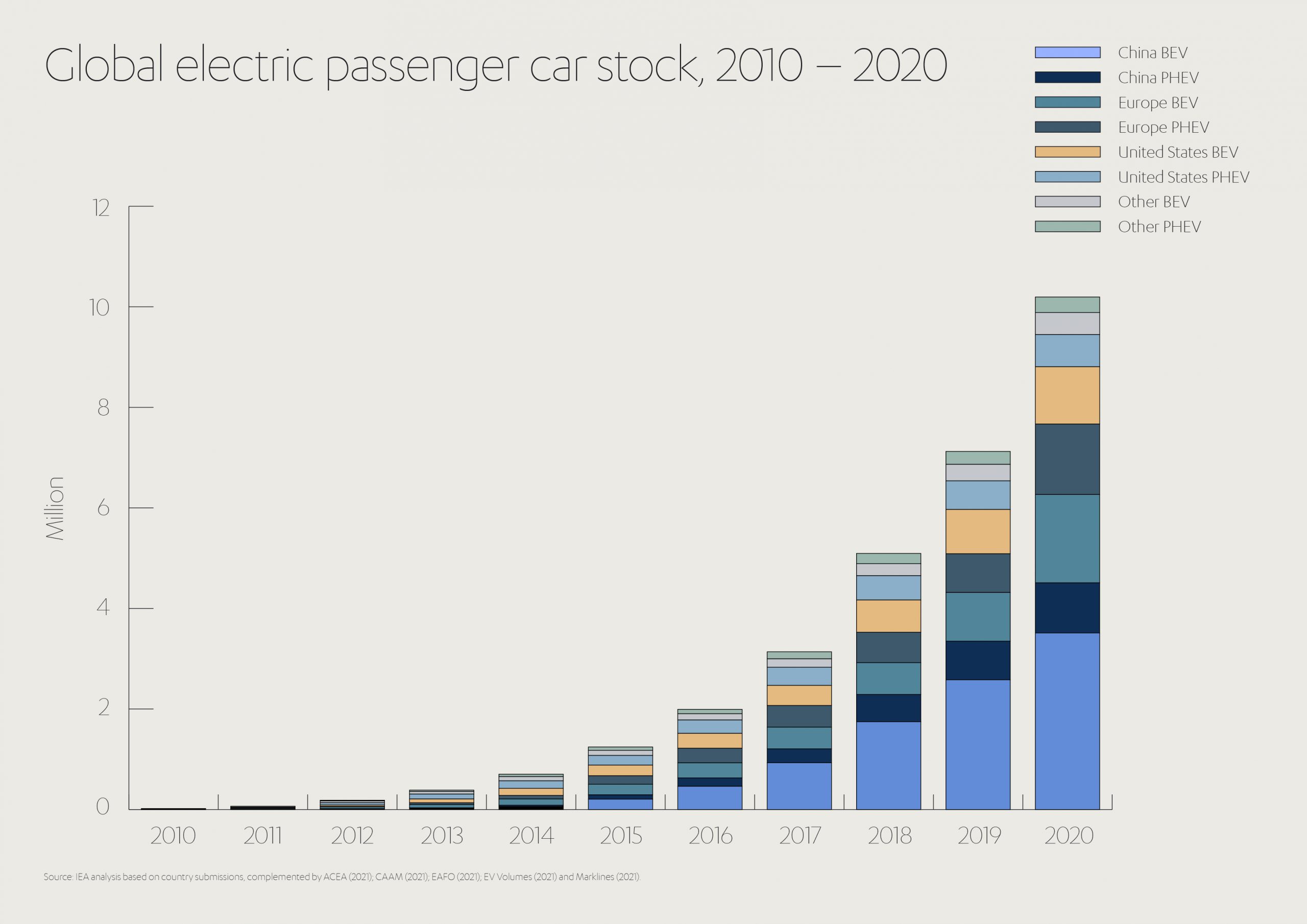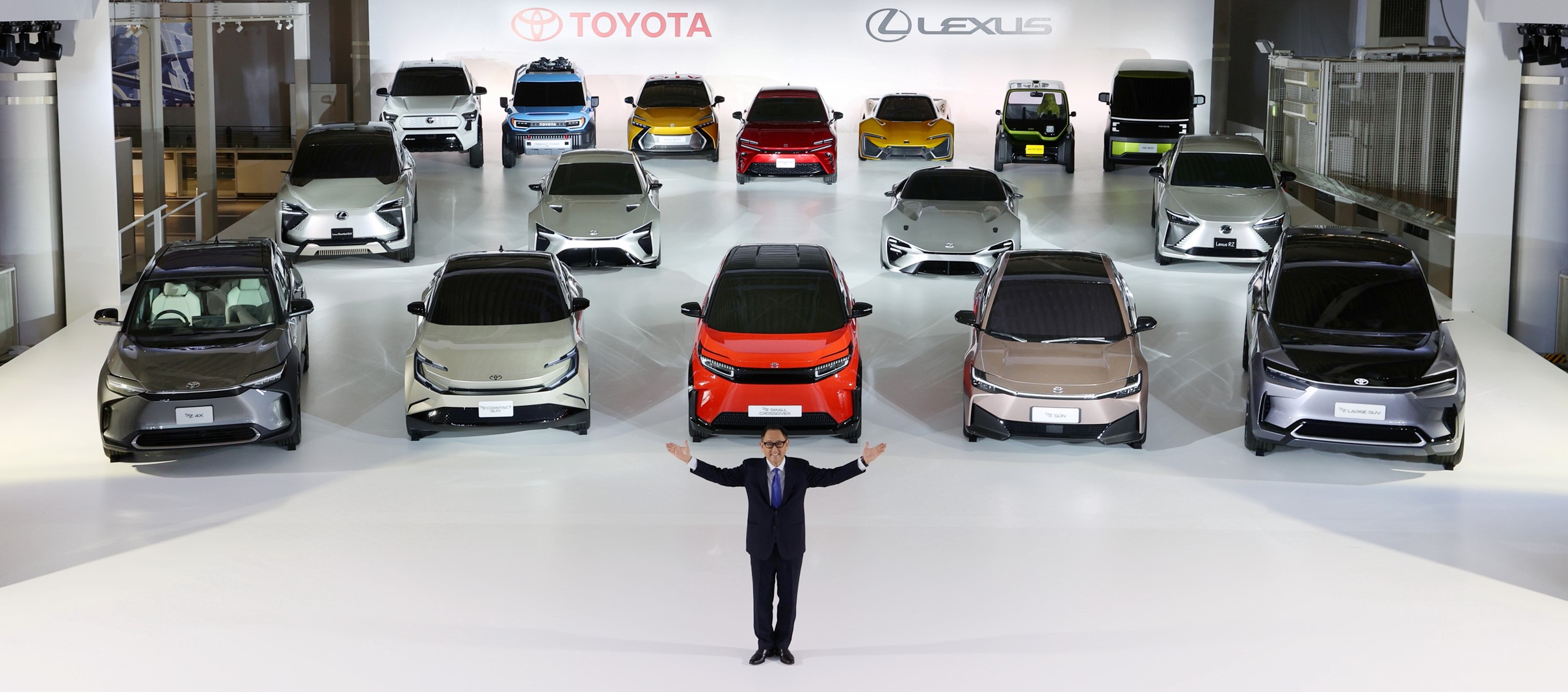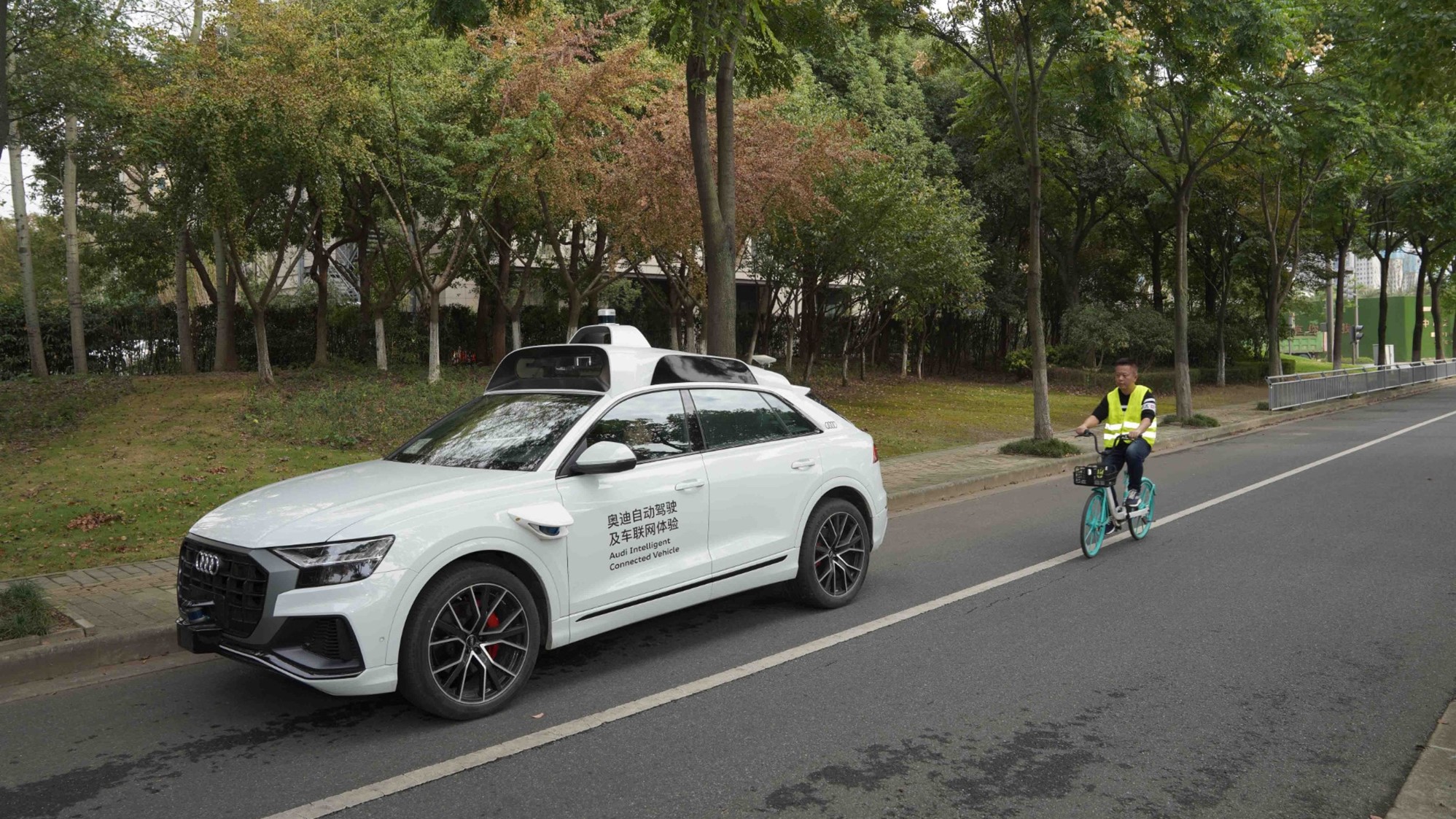Buckle-up for the smart motoring phenomenon
Cars have arrived at a fork in the road – and there’s no doubt which way they are turning. The future is green. Electric vehicle (EV) sales hit 10 million in 2020, 43% up on the previous year, representing an astonishing 70% market share rise.[1]
Some forecasts see more than 200 million EVs running globally by 2030.[2] Meanwhile, plunging TCO (total cost of ownership) for hydrogen powered vehicles, predicted to become cheaper than battery EVs by 2026[3], will only add to the one-way traffic and eventually drive internal combustion engine (ICE) models to virtual extinction.

What is less clear – or at least less well publicized – is the future evolution of the driving experience itself. It’s not just the mechanics, materials and fuels that are set for a seismic shift. So too is the interaction of driver with machine, as human intervention gradually cedes ground to the car’s own built-in brain.
The future is ‘smart’. Okay, perhaps that’s an overused business tech cliché. So, in vehicular terms, what does smart actually entail for you, for me, and for anyone else familiar with the increasingly outmoded ‘mirror, signal, maneuver’ experience?
Are the days of the ‘driver’ numbered?
Let’s deal first with perhaps the ultimate expression of ‘smart’ vehicles – autonomous driving.
These range from light-touch driver aids to ‘sit back and enjoy the journey’ full autopilots. For standardization purposes, these systems are divided by the industry itself into six categories:[4]
- Level 0: Providing warnings and intermittent help, from emergency braking to blind spot alerts.
- Level 1: Steering OR brake/acceleration support, such as lane centering OR adaptive cruise control (ACC).
- Level 2: Steering AND brake/acceleration support, such as lane centering AND adaptive cruise control.
- Level 3: Auto-drive under certain conditions, such as a traffic jam chauffeur.
- Level 4: Auto-drive under certain conditions (not requiring pedals or steering wheels).
- Level 5: Completely self-driving under any and all conditions.

Few cars currently available for purchase exceed the Level 2 threshold, although several trials at Level 3 are under way in controlled conditions, and trials for privately-owned Level 4 vehicles on main roads could be greenlit by 2024 or 2025. Still, manufacturers anticipating the eventual takeover of roads by autonomous cars are already producing vehicles which are beginning to redefine the very concept of driving.
Steering toward a smarter future
Abdul Latif Jameel’s long-standing automotive partner, Toyota Motor Corporation, is a renowned pioneer within the mobility industry.

It is developing a two-pronged approach to automated driving technology. Its ‘Guardian’ active safety platform aims to “safely blend vehicle control between the driver and an AI system, sharing roles to take the best advantage of their skills[5],” a system it calls ‘blended envelope control.’
The second approach it is developing, ‘Chauffeur’, is an autonomous driving technology that will allow a vehicle to operate on its own without human oversight or fallback responsibility. It is aimed at those “who cannot or choose not to drive because of age, infirmity, or any other reason” and is being designed to utilize artificial intelligence (AI) systems to thoroughly perform the driving function (similar to SAE Levels 4 and 5).[6]
In addition, through its Toyota Ventures early-stage venture capital firm, it is funding state-of-the-art research into the kind of interconnected technologies which will help shape all our lives. Apex.AI, for instance, develops certified software solutions for autonomous mobility systems such as Apex.OS, built on the Robot Operating System. Nauto, meanwhile, is creating a real-time, AI-powered Driver Behavior Learning Platform, analyzing billions of data points to predict and prevent high-risk traits like distracted driving. Under Toyota’s ethos, mobility is just one facet of a wider vision also encompassing robotics, smart cities, AI, energy and more.
EV disruptor RIVIAN, in which the Jameel Family was a major early investor, is likewise positioning itself at the forefront of future technology. It is developing an AI charging system that could help its batteries last up to three times longer than traditional alternatives. Its software-enriched vehicles come with multiple pre-installed systems that can be updated in the same way as cellphone apps, governing features such as driver monitoring, telematics, thermal management and hands-free driver assistance.
RIVIAN is far from the only next-generation manufacturer with its finger on the pulse of smart technology. Industry trendsetter Tesla offers a suite of so-called Advanced Driver Assistance Systems (ADAS) via its Autopilot technology, presently reaching Level 2 automation. Features include traffic-sensitive cruise control, automatic lane centering, automatic lane changes, self-parking and semi-autonomous navigation on limited access freeways. It aims to ultimately reach Level 4 and even Level 5 automation.

Classic marques are investing heavily to keep pace with these breakthrough brands. Cadillac’s Super Cruise technology, available via its 2018-2020 CT6, 2021-2022 CT4, CT5 and Escalade, and forthcoming 2023 LYRIQ models, claims to provide the first true hands-free driving-assistance technology for compatible roads.[7] It uses real-time precise positioning, cameras, sensors and LiDAR map data to help detect curves in the road, and can perform lane changes on demand. More than 7 million miles of Super Cruise driving have so far been logged.
Volkswagen’s Golfs and Passats now come with automatic distance control, maintaining not only pre-set speeds but also safe spaces in relation to surrounding vehicles. Built-in radar and camera systems react to traffic signs, automatically detecting changes to speed limits.[8]
BMW hopes to launch its first Level 3 (under limited road conditions) autonomous vehicle later in 2022 via its 7 Series sedan. The technology is a hardware-software combination capable of processing data 20 times faster than current BMWs, supported by ADAS software from partner Mobileye.[9]
Meanwhile, Audi has unleashed its self-driving Audi Q8 vehicles on the city of Wuxi, China – the world’s first demonstration of autonomous driving on public roads with V2X (vehicle-to-everything) communication.[10] As an up-and-coming smart city, Wuxi is proving an ideal testing base for such high-level autonomous vehicles: braking automatically in response to other vehicles and pedestrians, avoiding emergency vehicles and synching with the vehicle-to-infrastructure (V2I) traffic light service.

At the conceptual stage, Audi has unveiled further plans for autonomous vehicles at both the luxury and sports ends of the market. Its luxury Grandsphere design features controls that fold away to make way for lounge-style seats in the front[11]. The sporty Skysphere, in contrast, expands its body length by 10 inches as it shifts from human to self-drive mode.[12]
With such a range of technologies on the horizon it’s hardly surprising that the industry is tipped to boom. The autonomous cars market, estimated at US$ 1.64 billion in 2021, is expected to soar to more than US$ 11 billion by 2028.[13] And this, surely, is just the beginning.
Robo-taxis running at the cutting edge
Among industry observers, Levels 4 and above is where things get really exciting. This level of automation rarely requires a person to intervene in the operation of the vehicle, thereby liberating passengers to engage in activities other than monitoring the road.
Large-scale rollouts of vehicles at this level of sophistication are not likely to commence before the mid-2020s and will initially be limited to tech-friendly markets such as the United Stated and China. Automated trucking for the logistics industry could follow shortly thereafter.[14]
Small-scale test cases are another matter entirely, however. Globally, a vibrant community of tech startups are already seizing the initiative and raising the bar for truly autonomous vehicles.
 US-based Motional, for example, backed by Hyundai, began Level 4 trials on public roads last year. Its robo-taxis in Las Vegas are aiming to go fully driverless by 2023 before subsequently rolling out across the US.[15]
US-based Motional, for example, backed by Hyundai, began Level 4 trials on public roads last year. Its robo-taxis in Las Vegas are aiming to go fully driverless by 2023 before subsequently rolling out across the US.[15]
 Autonomous driving software firm Argo AI is banking on the self-drive surge through its partnership with industry giant Ford. In December 2021 the first fleet of self-driving Ford vehicles – currently requiring the presence of safety drivers – launched in Miami, Florida, on the Lyft ridesharing network.[16] If successful, the aim is to spread the AI-controlled vehicles to other US states in 2022.
Autonomous driving software firm Argo AI is banking on the self-drive surge through its partnership with industry giant Ford. In December 2021 the first fleet of self-driving Ford vehicles – currently requiring the presence of safety drivers – launched in Miami, Florida, on the Lyft ridesharing network.[16] If successful, the aim is to spread the AI-controlled vehicles to other US states in 2022.
 Google-funded Waymo already offers a driverless ride-hailing service, Waymo One, on designated roads within the suburbs of Phoenix, Arizona, and is now testing in San Francisco.[17]
Google-funded Waymo already offers a driverless ride-hailing service, Waymo One, on designated roads within the suburbs of Phoenix, Arizona, and is now testing in San Francisco.[17]

As a renowned smart city, San Francisco is also home to the General Motors-owned Cruise[18], whose driverless taxi service opened to the public in February 2022 after extensive testing throughout 2021. Further afield, in China, Alibaba-backed AutoX became the first in the country to deploy driverless robo-taxis, and currently operates fleets in selected areas of Shenzhen, Guangzhou, Shanghai and Beijing.[19],[20]

Although momentum is firmly behind autonomous motoring, metaphorical speed bumps do loom on the horizon which may slow the speed of adoption.
When surveyed, OEMs and tech startups across North America, Europe and Asia-Pacific highlighted three potential areas of concern: lack of regulatory synergy, technological shortfalls, and customer demand.
- Regulation: Evidence is already mounting for regulatory disharmony. A number of European countries are setting laws independently rather than coordinating efforts; in China, meanwhile, different regulations are emerging within individual municipalities.
- Technology: A further evolution of perception, prediction and decision-making software, likely requiring several billion dollars of extra investment, is deemed necessary for the widespread launch of Level 4 and above vehicles.
- Demand: Every crash involving an autonomous vehicle receives disproportionately more media attention than crashes involving human drivers.
Given that customer choice will ultimately dictate the speed of smart tech success, the race is on to swing public opinion by improving one feature above all others: safety.
Safer, sustainable, smarter travel
Data from driverless vehicle pioneer Tesla suggests an average of one fatality per 320 million miles in an autonomous vehicle. This compares to approximately one fatality per 100 million miles in the case of cars driven by humans.[21] In a country like the United States, which records approximately 37,000 car-related deaths per year, widespread adoption of driverless vehicles could therefore translate to thousands of lives saved annually.[22]
So, what are some of the safety technologies that justify putting confidence in a digital rather than human driver?[23]

Computer-managed steering and sensors work in unison to convey the car to its destination and keep it physically on the road. These sensors survey the landscape (not just the static landscape, but also more changeable factors such as pedestrians and other vehicles) and react to unexpected events faster than even the most alert human.
Smart breakdown technology can self-diagnose problems, self-repair when possible, and automatically alert recovery services if necessary, to remove people stranded in sometimes hazardous circumstances.
Built-in traffic flow monitors will ensure passengers will arrive at their destinations quicker – and more likely in one piece – at slower, safer speeds. When autonomous cars become the norm rather than the exception, vehicles will be able to ‘talk to’ each other to regulate the city-wide movement of traffic more efficiently.
Indeed, the deployment of AI across the auto industry will increasingly dovetail with the spread of sustainable smart cities. 5G connectivity will enable not only instant vehicle-to-vehicle (V2V) communication but also vehicle-to-everything (V2X) communication – your car, in other words, participating in a symbiotic relationship with the environment it is traversing.[24]
Automatic emergency braking, in conjunction with collision warning systems, already ensure smooth deceleration without rear-wheel locking. Similarly, steering intervention maximizes the chances of coming to a controlled stop if and when the unexpected happens.
With safety increasingly assured, and with the traditional role of the ‘driver’ ever more sidelined, manufacturers and tech firms can turn their attentions to personalizing the driving experience. And it is here where smart technology could usher in some of the most novel enhancements to conventional notions of motoring.
A glimpse at the technology of tomorrow
If you consider yourself at the vanguard of technology simply by synching your cellphone with your car, prepare for another leap forward in the coming years as your car becomes controllable by your smart watch, too. Forget keys, buttons and fobs – if you want to start your engine, unlock your door, activate your headlights, summon roadside help, adjust the interior temperature or even contact your virtual PA, the only tool you need could already be strapped to your wrist.
Prepare, too, for in-vehicle interaction screens resembling (and fully interacting with) your smartphone. These are envisaged not just as tools for accessing the internet or contacting friends, but as personalized entertainment systems. Your music, movies, books, videogames, all available with a swish of your hand in front of a smart censor designed to recognize 3D gestures.
Designs are even emerging for cars featuring their own solar panels to self-charge EV batteries as they drive. Current technology might only allow for an extra 20+ miles of motoring per day, but that could make the difference between reaching the next charge point or not.[25]
If you wish to plot your own course rather than rely on built-in navigation, smart windscreens will display 4K-resolution directional waymarks over the terrain – as well as a host of other driver-friendly information, such as speed limits and fuel ranges.
As technology continues to gravitate from the tangible to the virtual, apps will stake an even greater claim on the future. Utilizing the next generation of AI systems, their versatility will be limited only by the imaginations of their creators. Expect apps to oversee vehicle security or optimize fuel consumption. Apps to serve as digital assistants. Apps that recognize your voice or your face and engage in simulated conversation. Even apps to warn you via your mobile device if you have accidentally left a child or animal in your car on a hot day.[26]
Apps, in short, that securely assimilate your data and thus know you as well as you know yourself: from the practical (for example, the journeys you regularly undertake) to the indulgent (such as your preferred level of mood lighting) and everything in between.
Cascading benefits of smart tech revolution
As more autonomous (and semi-autonomous) miles are recorded globally, the learning networks which underpin these technologies will become ever more intuitive and efficient. As they gradually outperform conventional technologies for both journey times and safety, and as more cities adopt compatible smart technology, a tipping point will arrive when Level 3 AI systems become the norm rather than the outlier – and when Level 4 and 5 systems increasingly gravitate from drawing board to boulevard.

Deputy President and Vice Chairman
Abdul Latif Jameel
“Smart driving systems can provide a faster, more convenient and above all safer transport solution for our society.
They can reduce congestion, improve safety for both passengers and other road users, and deliver a more engaging, pleasurable driving experience.
They can also contribute to the creation of greener, more livable urban communities and more efficient economies, and in doing so, play an important role in our journey towards net zero,” says Fady Jameel, Deputy President and Vice Chairman, Abdul Latif Jameel.
Be in no doubt – the automotive industry is shifting up a gear.
By combining the urgency of green technology with the limitless potential of smart tech, we can together make motoring fit for the future.
And what will this future look like?
Cease thinking of your car as your car and your lifestyle gadgets as independent adornments. Imagine instead a joined-up technological ecosystem, where one piece of kit interacts seamlessly with another and your car becomes an extension of your living space.
Above all, as vehicles gradually assume more of the functions fundamental to driving. imagine how you might better invest the swathes of time freed up by smart technology. With traffic navigation, eco efficiency, hazard avoidance and parking heading inextricably towards AI automation, cars in the coming years can instead become hubs for activities either productive or pleasurable – work, communication, entertainment. Right now, we find ourselves at a crossroads of limitless possibilities.
[1] https://www.iea.org/reports/global-ev-outlook-2021/trends-and-developments-in-electric-vehicle-markets
[2] https://www.iea.org/reports/global-ev-outlook-2021/prospects-for-electric-vehicle-deployment
[3] https://www2.deloitte.com/content/dam/Deloitte/cn/Documents/finance/deloitte-cn-fueling-the-future-of-mobility-en-200101.pdf
[4] https://www.sae.org/news/press-room/2018/12/sae-international-releases-updated-visual-chart-for-its-%E2%80%9Clevels-of-driving-automation%E2%80%9D-standard-for-self-driving-vehicles
[5] https://automatedtoyota.com/
[6] https://automatedtoyota.com/
[7] https://www.cadillac.com/world-of-cadillac/innovation/super-cruise
[8] https://www.volkswagen.co.uk/en/electric-and-hybrid/software-and-technology/driving-technology/autonomous-driving.html
[9] https://www.forbes.com/wheels/features/bmw-7-series-level-3-autonomy/#:~:text=BMW’s%20Level%203%20campaign%20will,a%20function%20you%20can%20buy.
[10] https://www.audi.com/en/innovation/autonomous-driving/driverless-test-drives-in-china.html
[11] https://edition.cnn.com/2021/09/02/business/audi-grandsphere-concept/index.html
[12] https://edition.cnn.com/2021/08/14/success/audi-skysphere-self-driving-concept/index.html
[13] https://www.fortunebusinessinsights.com/industry-reports/autonomous-cars-market-100141
[14] https://www.mckinsey.com/features/mckinsey-center-for-future-mobility/our-insights/whats-next-for-autonomous-vehicles
[15] https://fortune.com/2021/11/10/motionals-driverless-taxi-fleet-will-expand-worldwide-after-vegas-2023-launch-ceo-says/
[16] https://www.lyft.com/blog/posts/lyft-ford-and-argo-chart-a-path-to-a-self-driving-future-in-miami
[17] https://waymo.com/waymo-one/
[18] https://www.getcruise.com/
[19] https://www.forbes.com/sites/bradtempleton/2021/01/27/autox-opens-real-robotaxi-service-in-china-to-the-general-public/?sh=2dbc90915a6f
[20] https://www.autox.ai/en/index.html
[21] https://www.vox.com/2018/5/17/17362308/elon-musk-tesla-self-driving-autopilot-fatalities
[22] https://www.forbes.com/sites/lanceeliot/2019/05/30/essential-stats-for-justifying-and-comparing-self-driving-cars-to-humans-at-the-wheel/
[23] https://www.telegraph.co.uk/cars/driving-smart/in-car-smart-tech/
[24] https://www.just-auto.com/features/how-is-ai-impacting-the-automotive-industry/
[25] https://www.wired.com/story/ces-2021-highlights-liveblog-whole-show/
[26] https://www.nio.com/blog/our-future-smart-cars-will-be-embodied-digital-assistants





 1x
1x

 Added to press kit
Added to press kit


